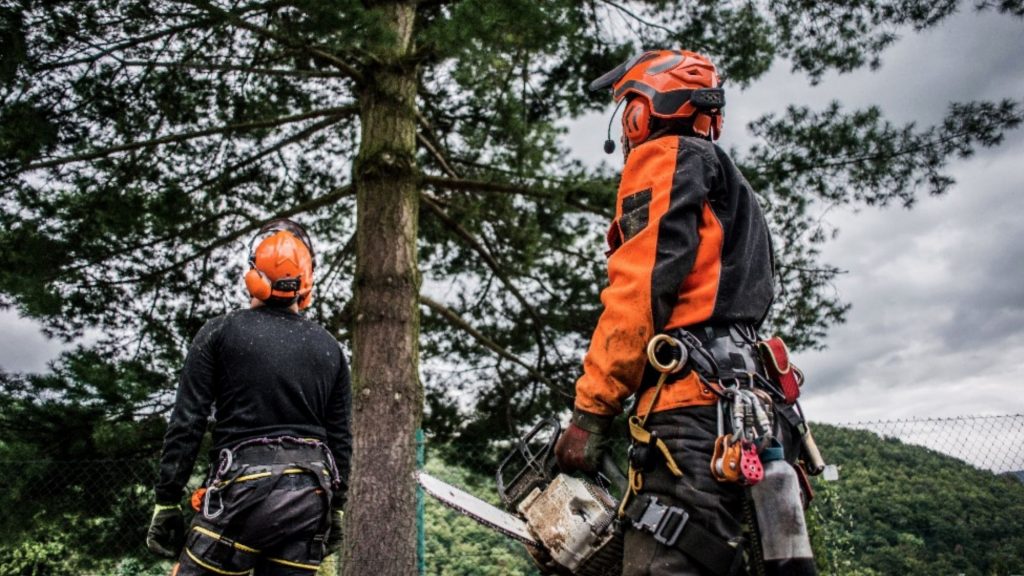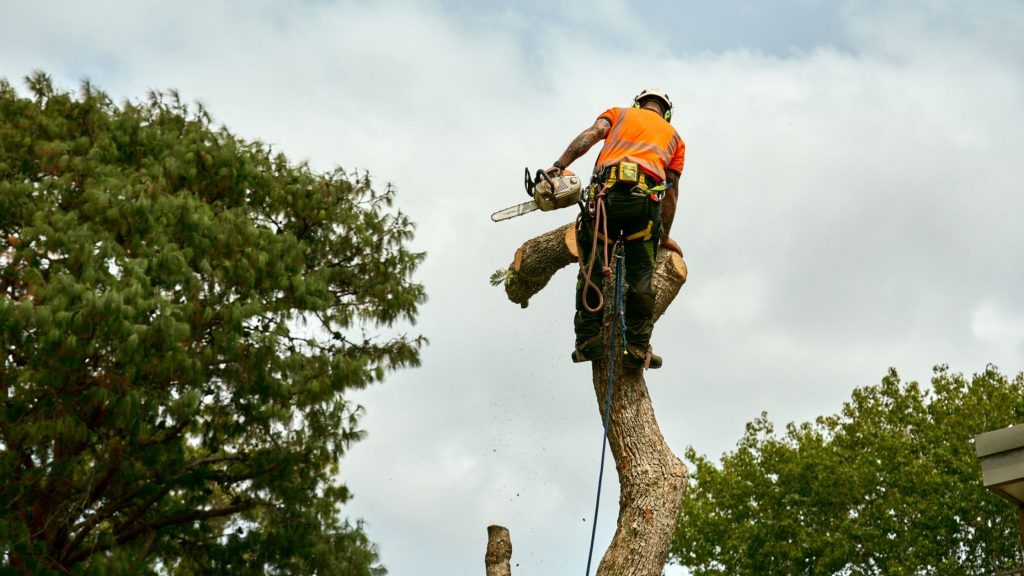Month: May 2021
What You Need To Know Before Removing a Tree From Your Property
There will be a time that you’ll need to do pruning or tree removal on your property. We understand that you have to perform those tasks for dozens of reasons. But do you know you can’t just remove trees whenever you want?
You must know and understand laws and codes for you to perform tree removal in NSW. Tree removal is regulated in New South Wales. There are several factors to consider before you are allowed to remove a tree – even if it is in your own backyard.
Failing to identify the factors and situations that can get you in trouble is something you should avoid. Don’t worry. We’re here to help you.
Let this article be your guide and resource when planning to do pruning and tree removal in NSW.
Reasons Why You Should Do Tree Removal

We’ve mentioned above that you want to cut or remove your trees for various reasons. However, these reasons for cutting down trees, lopping, and major pruning must undergo an informed process. It should be clear that state and local laws do not allow indiscriminate tree removal.
Here are some valid reasons why you should do tree removal:
- People, animals, and property around the tree are at risk.
- The tree is infested with pests, sick or dying.
- The tree is already dead.
- You need to build new structures or do renovations on your property.
How Much Do Tree Removal Services Cost
The cost of tree removal services may vary. Some factors can greatly influence the pricing of these services. Listed below are factors where the pricing of tree removal services is usually based;
- The location of the tree
- The access from the main road to the tree
- Safety and environmental factors that can affect the tree removal process
- The size and span of the branches of the tree
- Logistics required (Equipment, manpower, skill level)
- Stump grinding fees
The average range of tree removal services in New South Wales ranges from $300-$700.
Laws and Regulations on Tree Removal and Pruning in New South Wales

If you’re a resident of New South Wales, it’s important to know about some of the state’s laws and regulations about tree removal.
The rules regarding tree removal differ from council to council. However, each and every legislation covering this topic are patterned after Local Environment Plans (LEPs) and Tree Preservation Orders (TPOs). Most of the time, you will need approval council before removing any tree from your property.
Now that we’ve covered the general rule let’s proceed to some specific laws for special situations.
Environmental Heritage Item
Some species of trees have significant value in history and heritage or are endangered, so it is strictly prohibited to cut them down. If you own a Graveside Gorge Acacia a Velvety Spiral Pod Wattle, or any species of eucalyptus, then you’re out of luck. These are protected trees and you’re not allowed to remove them.
Regulated Trees
Trees that are huge and really old, regardless of their species, are treated and declared as regulated trees.
Regulated trees have the following characteristics:
- Trees that are at least 12 metres high.
- Trunks with at least 1.5 metres circumference measured 1 metre from the ground.
- Trees with a canopy spreading at least 12 metres.
Significant Tree Register
If your tree is listed in the Significant Tree Register, you must request to remove it from the list. You should do this before applying for a permit to remove it from your property.
Note: For Registered and Regulated Trees, a permit is not required for minor pruning. Anything more than minor pruning would require securing a permit from your local council.
10/50 Vegetation Clearing Scheme
The 10/50 Vegetation Clearing Scheme provides NSW residents the right to clear vegetation like bushes and trees within 10 to 50 metres from their home.
If the 10/50 Vegetation Scheme applies to you, approval from local authorities to remove the trees will not be necessary.
This law is part of the safety measures implemented by the NSW Government to protect the public from forest fires.
Situations Where You are Allowed to Remove Trees Without Getting Persecuted
Here are situations where you can treat trees as “fair game” and can remove them without the need for permits or fear of persecution:
- Any declared pest plant
- Any tree that is within 20 metres from your dwelling in a medium to high-risk bushfire area.
- Any tree that falls under the 10/50 Vegetation Clearing Rule.
Final Thoughts
A few hiccups and implications can occur if you decide to remove a tree from your property. Special permits are needed, the species of the tree you want to be removed is a factor, and you need professional advice and assistance when planning to do tree removal.
What do you think about the information presented in this article? Share your thoughts.
10/50 Tree Removal/Vegetation Code of Practice
Warning: Undefined array key "id" in /home/treesdownunder/public_html/wp-content/themes/treesdownunder-theme/inc/theme/theme-customize.php on line 146
It is crucial for people residing near the forests and rural areas of New South Wales to secure their property against bushfires and similar incidents, especially during summer.
That’s why it is important to understand NSW’s 10/50 code of practice when possibly considering removing trees from your property. Following the 10/50 process will pay off in the long run, as it’s streamlined by the NSW Rural Fire Service as one way to protect your home from the bushfire season.
That said, we’ll break down and simplify the 10/50 vegetation clearing scheme and how you can implement it at home.
Removing Vegetation Without Government Permits
The 10/50 vegetation clearing legislation entitles landowners to cut down and remove trees and vegetation without council permits. It’s worth noting the rule applies to all properties within bushfire zones and those that meet the 10 to 50-metre criteria.
Establishments Covered by the 10/50 Rule
According to the legislation, the 10/50 vegetation clearing scheme covers the outer walls of residential and accommodation buildings. These also include manufactured houses, caravans, and living quarters.
The 10/50 rule also covers institutions such as nurseries, schools, and hospitals, requiring them to control and mitigate the vegetation around the facilities.
How to Implement the 10/50 Rule?
The rule requires you to measure 10 to 50 metres perpendicular to the building in question, for starters. If you have adjacent establishments such as a garage or deck, then begin measuring from their outer walls.
However, garages and decks located far from the populated buildings should not be included in the 10/50 rule. Keep in mind that the rule only takes place in populated facilities approved by any legally recognised personalities or authorities. Otherwise, the said rule will not apply.
Reference: https://www.rfs.nsw.gov.au/plan-and-prepare/1050-vegetation-clearing
Vegetation Covered in the 10/50 Vegetation Clearing Rule
The 10/50 rule includes taking down trees and vegetation. You could be asking what exactly could be counted as ‘vegetation’? Don’t worry, many of our customers ask the same thing. We will cover it all below!
What’s technically considered a tree or vegetation?
Firstly, the 10/50 vegetation clearing defines trees as any permanent wooden plants located within the vicinity.
A tree should also have a single stem that reaches at least three metres in length with a chest-height circumference of above 30 centimetres.
Following the definition, we do not consider shrubs as trees under the rule. That said, any low-growing plants with small branches and vines are not included under the ten-metre rule, but any shrubs within a 50-metre radius are subject to removal.
The vegetation clearing rule only allows any facility to prune and cut down trees within a ten-metre radius. Nevertheless, when lopping and cutting a tree, it’s crucial to ensure a safe and efficient process.
For your tree pruning and removal, Trees Down Under streamlines a time-tested and reliable service to clear your establishment from unwanted vegetation. We will follow the regulations and policies indicated in the 10/50 legislation to ensure that we violate no environmental policies.
10/50 Rule: Other Points to Consider
When planning your building’s 10/50 vegetation clearing scheme, do not include the trees erected on slopes, regardless of the slope angle. That’s because the tree’s root system holds the soil together and prevents erosion.
If you don’t own the property (i.e., leasing or renting it), you’ll need the landowner’s approval and directives before you can implement the 10/50 vegetation clearing under the entitlement area rule.
Furthermore, the rule gives you a broad range of clearing methods you prefer, as long as you don’t use heavy equipment and procedures that alter the natural soil profile. That includes using graders and bulldozers or ploughing the leveled soil throughout the clearing operation.
Besides, clearing trees and foliage via burning is strictly prohibited. That’s why our arborists at Trees Down Under use safety gears and equipment to cut down any tree from top to bottom.
The rule also prohibits people from removing vegetation within a heritage site or about ten metres of a prescribed fire/peak streamflow. To determine whether there are prescribed streams or heritage areas near your site, feel free to use the official online tool from the NSW Rural Fire Service.
10/50 Vegetation Clearing Rule Restrictions
As discussed, any aboriginal land, slopes, or cultural heritage sites are restricted from the vegetation clearing rule.
Keep in mind that the rule applies only on properties within a 10 to 50-metre radius entitlement area, be it public or private property.
Who Can Implement the 10/50 Rule?
According to the legislation, only the landowner has directives and jurisdiction to clear vegetation within the specified radius.
For renters and tenants, you’ll need a written and legal direction from your landowner. Otherwise, any environmental violation won’t be covered under the ruling.
If you’re still unsure whether your property will fall under the 10/50 rule, feel free to reach out to our experts. We will be able to provide expertise, as well as provide any services required to help you safely and efficiently remove any unwanted trees in your property.